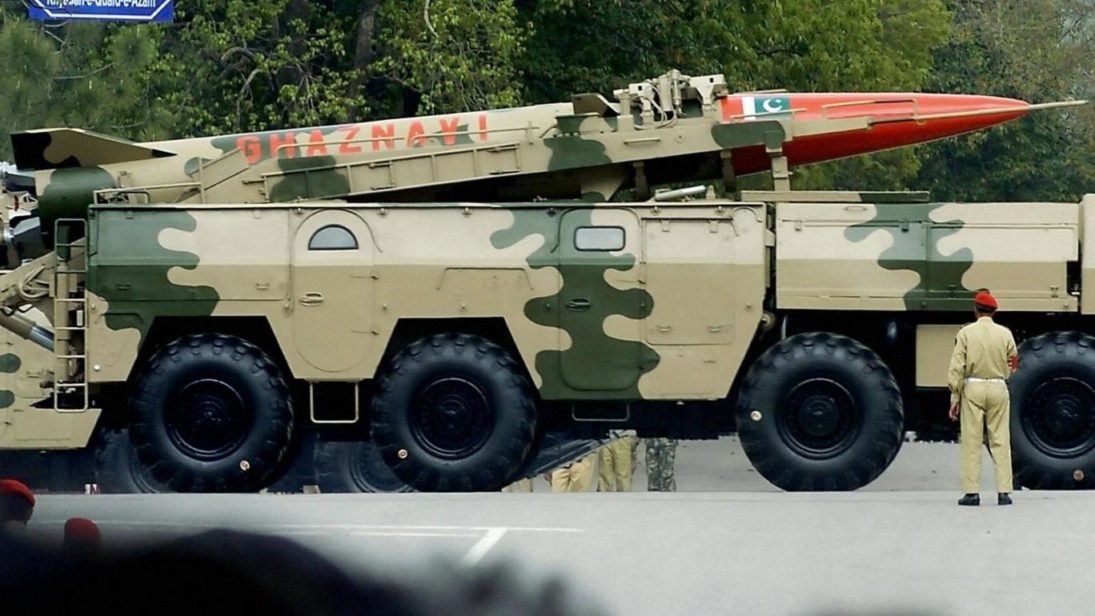
The world saw the terrible power and consequences of nuclear weapons use in 1945. Since then, while the club of states with nuclear weapons has expanded, a tradition of non-use has held. The more comprehensive explanation of this non-use puzzle is based on a realpolitik argument or material factors such as existence of nuclear weapons and “deterrence.” To fully understand why nuclear weapons have not been used since 1945, Nina Tannenwald in The Nuclear Taboo uses the notion of a “taboo.” Tannenwald believes that deterrence is an important but insufficient part of this explanation. For her, the normative aspect provides a more convincing explanation. Tannenwald chronicles how “sociology of danger” shapes state behavior such that nuclear weapons remain unused. However, questions remain over the resilience of the global non-use norm in the South Asian context. The nuclear taboo has not yet been recognized in South Asia because the security dilemma between India and Pakistan is sufficiently deep-rooted in the realpolitik argument.
Pakistan’s nuclear behavior is guided by two main factors. First, it is influenced by the nuclear non-proliferation regime that failed to secure Pakistan’s cooperation. From the outset, Pakistan sought to be aligned with the global community—particularly the United States—sometimes on bilateral grounds and on other occasions as part of trilateral or multilateral alliances. Pakistan’s behavior in the period from the early 1950s to the mid-1960s shows its cooperation-based policy, as evidenced by its participation in global alliances such as Southeast Asia Treaty Organization (SEATO) and Central Treaty Organization (CENTO). Pakistan became a member of the International Atomic Energy Agency (IAEA) at its inception in 1957 and supported global nuclear non-proliferation and disarmament efforts on normative grounds. Pakistan refrained from nuclear weapons development in this period and relied instead on international alliances. Pakistan’s experience in the 1965 and 1971 wars, when it received no help from its allies, led it to rely less on alliance systems and turn instead towards self-help. Second, India’s acquisition of nuclear weapons was the main motivation behind Pakistan’s own nuclear program. Pakistan was left with no choice but to acquire nuclear weapons capability after the Indian peaceful nuclear explosion (PNE) in 1974, which redefined the strategic equation in South Asia. Pakistan embarked upon a nuclear program after this event. India’s second nuclear test in 1998 changed Pakistan’s opaque and restrained nuclear posture into overt weaponization. Pakistan’s nuclear policy, its doctrinal strategies, and contingency plans are clearly directed to neutralize Indian actions.
Nuclear deterrence has prevented both conventional and nuclear war up to this point. Through its mediation, the United States has preserved the nuclear taboo in South Asia in the past. Two major crises (Brasstacks in 1986-87 and the Kashmir crisis in 1990–91), as well as the Kargil crisis in 1999 and the long period of armed confrontation following the attack on the Indian parliament in December 2001 have been resolved or contained through U.S. mediation. It is possible that the United States would not have intervened had both states not been nuclear armed. Equally important, U.S. mediation might not have been accepted by the parties—principally by India, which rejects third party mediation in most cases—had the risks of nuclear conflict not been so great. Conversely, there is reason to worry that U.S. mediation may not be guaranteed in the future.
The nuclear taboo is challenged in South Asia because of regional complexities and the distinct political direction of two recent nuclear weapon states. Politically, India is focused on projecting power beyond the region, whereas Pakistan is focused on the maximization of its own security vis-à-vis India. Thus, Pakistan’s behavior on nuclear use and non-use cannot be explained based on ideational or non-material factors nor dealt with in isolation from problems related to the regional strategic environment or within the non-proliferation system.
Both countries also face regionally-specific challenges to maintaining the nuclear taboo. Pakistan and India are developing countries and their societal factors cannot be compared with the major powers of the world. Challenges relating to literacy rates, political intolerance, and human rights are substantial in both societies. As a result, both lack strong indigenous civil society movements and public awareness on the consequences of employment of nuclear weapons. Finally, neither country is willing to compromise on the decades-old problem of Kashmir.
Additionally, in South Asia, nuclear competition and mistrust is not bilateral but trilateral. India reacts not only to Pakistan but also to China. China supports Pakistan, but also has an uneasy relationship with the United States, which views China as a potential enemy. The solution in South Asia, therefore, does not lie in bilateral negotiations between India and Pakistan or modifying Pakistan’s behavior on non-use through societal pressures or ideational factors. The security dilemma of South Asia and preventing tensions between India and Pakistan are sufficiently problematic to require outside mediation. Specifically, intervention by international institutions such as the United Nations Security Council will be required in a possible India-Pakistan crisis. Prevention of such a grim scenario will involve the non-proliferation regime itself playing a balancing role in South Asia.
Bilaterally, India and Pakistan should be conscious that they cannot avoid risks of nuclear war until they revisit and rationalise their all-inclusive military plans, adopt budgetary constraints, and institute arms control mechanisms that reflect doctrinal clarity for the good of the people of both states. The two states should focus on devising diplomatic means for the settlement of the bilateral disputes, especially Kashmir. Establishment of public awareness centers on the consequences of use of nuclear weapons, escalation control strategies, and the two states’ commitment to human rights, which must be absolute and form the core of future nuclear policies. The two states need to build a stable political relationship to enhance deterrence stability and mitigate their mistrust while promoting trade and building cooperation where it is possible. The nuclear taboo in South Asia will remain fragile in the presence of insecure peace and unstable deterrence.
***
Image: Jewel Samad-AFP, Getty


